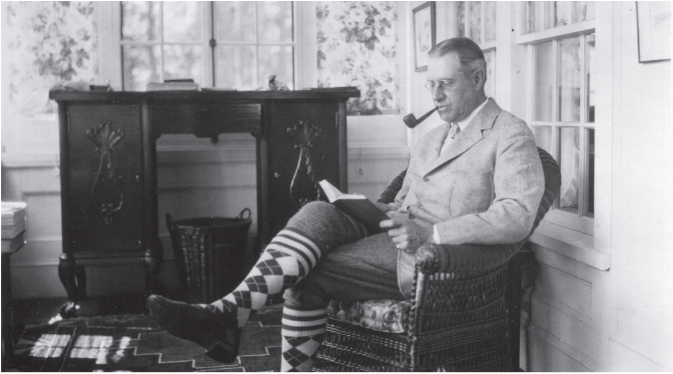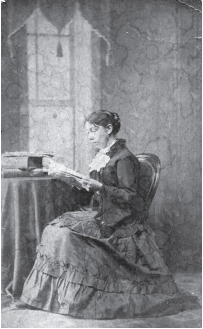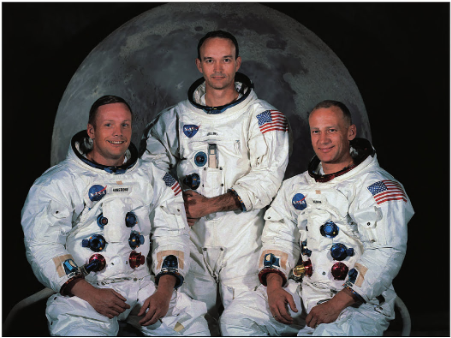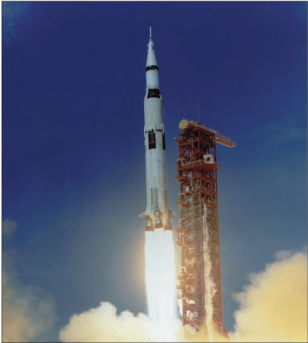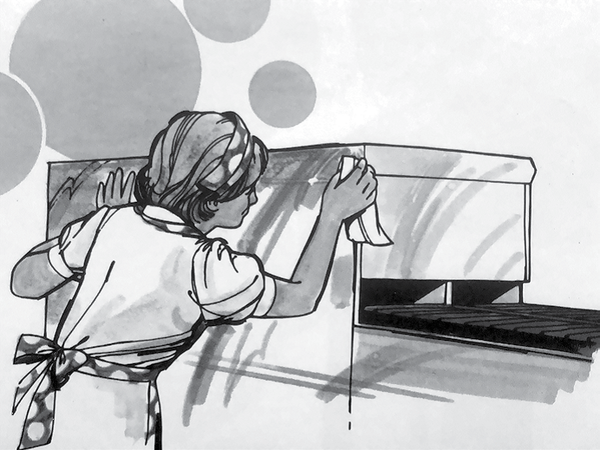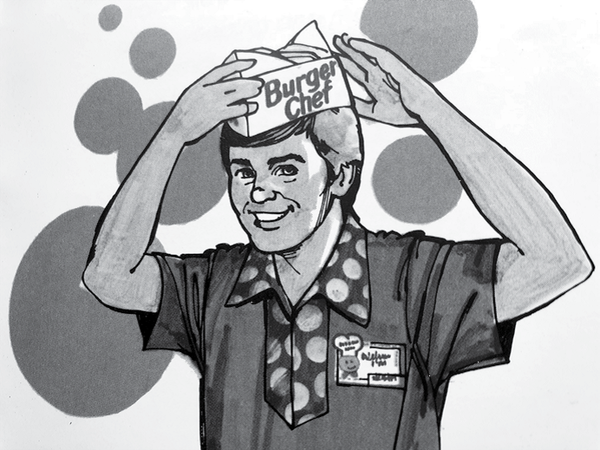American history is filled with influential people, from military leaders and presidents to visionaries and writers, activists and entrepreneurs. But it’s one thing to deem a given historical figure influential. It’s another to define what it means to be influential. What makes a given person worthy of a spot on a Top 100 list? Is it really possible for one person on such a list to matter more than another? How much do changing societal values affect who’s considered noteworthy and who is not?
Here we’ll take a closer look at the concept of influence itself, as well as introduce the list of people considered by modern historians to be the most influential when it comes to American history. Did your favorites make the list?
What Makes a Person Influential?
Influence is a tough concept to pin down. Every last one of us knows it when we see it, but most of us would struggle to define it. Although accomplishments absolutely do factor into the picture, true influence is about a lot more than that. It’s also about how strongly the figure in question helped to shape our nation and society as we know it today.
While ‘influence’ is often positive, it’s important to note that it doesn’t necessarily have to be. Factors that can determine a person’s level of influence include the power of pop culture, the nature of the person’s achievements, and the values that drove the figure to make the decisions that they did as far as their life’s work.
American History’s 100 Most Influential People
Although several publications and historical authorities have attempted to compile a list of history’s most influential figures, the most definitive one is the one established by The Atlantic. In order to determine who made the cut, a panel of ten prominent modern historians was asked to collectively weigh in. Did your favorites make the cut?
Abraham Lincoln
“Four score and seven years ago…” begins Abraham Lincoln’s famous speech. Born in Indiana, the 16th president is profoundly famous for his legendary influence on American history. Quite notably, he ended slavery and ushered in our nation’s second founding after the Civil War.
George Washington
George Washington, the father of our country, was born in Virgina and was integral to the founding of the nation. Washington’s Farewell Address infamously foreshadowed—and warned against—America’s two-party system, while he also set the precedent for presidents serving only two terms.
Thomas Jefferson
President Jefferson wrote in the Declaration of Independence that “all men are created equal,” an idea at the root of his profound influence on history and society.
Franklin D. Roosevelt
Among many of President Roosevelt’s accomplishments as president, he passed the New Deal which helped the USA recover from the Great Depression and established Medicare and Medicaid.
Alexander Hamilton
Hamilton’s legacy as a political scientist, soldier, and banker would eventually lead to America’s indisputable establishment as a major industrial force.
Benjamin Franklin
Perhaps best known for “discovering electricity” with a kite experiment in 1792, Franklin is considered the father of multiple American trades, including science, writing, invention, and many more. Benjamin Franklin is printed on the one-hundred dollar bill for his accomplishments.
John Marshall
A famous federalist who believed in strong government action, John Marshall strengthened the Supreme court by bringing the judicial branch into equality with the other two federal branches.
Martin Luther King
King, the author of the famous “I Have A Dream” speech is largely considered to be one of American history’s most important fighters for racial equality. The Martin Luther King Jr. Memorial is located on the National Mall in Washington D.C.
Thomas Edison
Although his invention of the lightbulb would have been reason enough for him to be present on this list, Edison was responsible for numerous inventions that would change history forever.
Woodrow Wilson
President Woodrow Wilson is credited with setting the stage for a foreign policy of American interventionism.
John D. Rockefeller
Rockefeller is known as the first major modern tycoon. He made a fortune with Standard Oil in Cleveland, and then became a philanthropist who invested in public education, public health, and more. You can still visit his massive, sprawling estate today!
Ulysses S. Grant
Not only was Grant one of American history’s greatest generals, but he was also the author of one of our nation’s most noteworthy political memoirs.
James Madison
James Madison, the fourth president of the United States, wrote the Bill of Rights, an undoubtedly important part of American history.
Henry Ford
America never would have had a chance to fall in love with the automobile if it weren’t for Ford’s Model T. Ford also revolutionized labor in America, popularizing the 40-hour, 5-day work week.
Theodore Roosevelt
President Roosevelt’s efforts and accomplishments, including his work in conservation, set the stage for 20th-century America as we knew it.
Mark Twain
Mark Twain, whose real name was Samuel Beckett, is a great American author whose novels influenced generations of American writers.
Ronald Reagan
Truman may have led us into the Cold War, but Reagan led us out of it. He is also the much loved force behind conservative realignment.
Andrew Jackson
President Jackson, whose face is on the twenty dollar bill, is directly responsible for taking America from a republic to the democracy it is today.
Thomas Paine
Paine was America’s first noteworthy radical, as well as the definitive voice of the American Revolution.
Carnegie
Carnegie is largely considered to be the very first self-made American. His influence is directly responsible for America’s eventual industrial identity.
Harry S. Truman
Truman is the president responsible for bringing us into both the Atomic Age and the Cold War.
Walt Whitman
Often called the father of free verse, Walt Whitman’s poetry, essays, and journals, many written during the Civil War, would come to have a lasting influence on how we saw ourselves as countrymen.
Orville and Wilbur Wright
The Wright Brothers, originally from Ohio, changed modern transportation forever when they invented flight on the shores of Kitty Hawk, North Carolina.
Alexander Graham Bell
When Bell invented the telephone, he would change the way humans communicate in profoundly lasting ways.
John Adams
Adams and his leadership were directly responsible for not only the American Revolution, but its eventual success.
Walt Disney
Another man that needs no introduction, Disney’s influence over the childhood of generations of Americans is undisputed.
Eli Whitney
When Whitney invented the cotton gin, he ushered in the era of cotton – an era which would eventually also be categorized by slavery.
Dwight D. Eisenhower
Before he was the 34th president of the United States, Eisenhower was a Supreme Commander who led Allied forces to victory during World War II. He also signed the Civil Rights Act of 1957.
Earl Warren
Earl Warren and the Supreme Court of his day would eventually be responsible for transforming our society at large.
Elizabeth Cady Stanton
Stanton’s tireless fighting for female voting rights and American social reform make her a major feminist icon.
Henry Clay
Clay’s penchant for oration and legislation was at the root of the compromises that held off the American civil war for many years.
Albert Einstein
Einstein is influential both for his game-changing scientific work and for his contagious humanity.
Ralph Waldo Emerson
Emerson taught a nation how to be self-reliant, making him the father of American individualism.
Jonas Salk
Jonas Salk’s groundbreaking polio vaccine is responsible for ridding society of one of history’s most debilitating plagues.
Jackie Robinson
Robinson is known not only for being one of baseball’s greatest, but for breaking the color barrier that was present in the sport previously.
William Jennings Bryan
Bryan ran for president three times and lost each time, but his populism is the real source of his lasting influence. He is best known for his “Cross of Gold” speech.
J.P. Morgan
J.P. Morgan was an investment banker who became the driving force behind the wave of industrial consolidation in the United States.
Susan B. Anthony
Anthony became the voice of women’s equality during the Suffrage Movement. She infamously voted illegally as a political protest.
Rachel Carson
Carson’s Silent Spring is largely credited with eventually ushering in the environmental movement of today.
John Dewey
Dewey worked tirelessly to turn the public school system into adequate training for democratic life.
Harriet Beecher Stowe
When Stowe penned Uncle Tom’s Cabin, she would spark inspiration for the generation of abolitionists behind the Civil War.
Eleanor Roosevelt
Roosevelt is well known for positively leveraging her position as the first lady, as well as the media of the time.
W.E.B. Du Bois
Du Bois devoted his life’s effort to addressing the “problem of the color line.” He coined the term “double consciousness” to describe racism in America.
Lyndon B. Johnson
Johnson is equally responsible for bringing history the Vietnam War, as well as important civil rights laws.
Samuel F.B. Morse
Morse is, of course, responsible for developing Morse code.
William Lloyd Garrison
Garrison, along with his newspaper The Garrison, would go down in history as one of abolition’s most noteworthy voices.
Frederick Douglass
Frederick Douglass escaped to freedom in 1838. Douglass’s writings on American slavery remain influential and important to this day.
Robert Oppenheimer
Largely known as the father of the atomic bomb, Oppenheimer ushered us into the nuclear era.
Frederick Law Olmsted
Olmstead not only gave us New York City’s beautiful Central Park, but showed us the importance of urban parks in general.
James K. Polk
Polk was only in office for one term, but he is responsible for making California, Texas, and the American Southwest permanent parts of our nation.
Margaret Sanger
Sanger’s championship of birth control would open the door to American sexual freedom as we know it today.
Joseph Smith
Smith was the founding father of Mormonism and the Latter Day Saint movement.
Oliver Wendell Holmes
A Supreme Court judge, Holmes stated the concept of “clear and present danger” as the only basis for limited the First Amendment, or the right of freedom to speech.
Bill Gates
Bill Gates is widely considered to be one of America’s greatest innovators, entrepreneurs, and philanthropists.
John Quincy Adams
Adams is the author of the Monroe Doctrine, a major influence on American diplomacy throughout history.
Horace Mann
Mann was an advocate for public schooling, making him the father of American education as we know it.
Robert E. Lee
General Robert E. Lee’s composure as a general and as a great American symbol of conciliation make him influential to this day.
John C. Calhoun
Calhoun goes down in history as slavery’s most outspoken and influential defender. He is largely considered the definitive voice of the antebellum South.
Louis Sullivan
American architecture would never be the same once Sullivan introduced us to an urban staple – the skyscraper.
William Faulkner
Faulkner’s depictions of the American South have created a lasting fascination with the region that endures to this day.
Samuel Gompers
A cigar maker, Gompers founded the American Federation of Labor and ushered in the age of the union with his organization efforts.
William James
Often called the “father of American pyschology,” William James is also known for being the first great American pragmatist, a school of philosophy.
George Marshall
Marshall is responsible for both rebuilding Western Europe, as well as organizing America’s efforts during WWII.
Jane Addams
Sociologist Jane Addams is the founder of Hull House, a major influence when it comes to American social work. She is also the second woman to win a Nobel Peace Prize.
Henry David Thoreau
Thoreau and his writings, such as Walden, have inspired multiple generations to “find themselves.”
Elvis Presley
Presley barely needs an introduction, as his musical influence on what we know as rock and roll is known by every American.
P.T. Barnum
The original inventor of the circus, Barnum changed the face of American entertainment forever, thanks to his penchant for spectacle and propaganda.
James D. Watson
Watson is the co-discoverer of the DNA double helix, a revelation that revolutionized medicine.
James Gordon Bennett
Bennett is considered to be the inventor of the modern-day American newspaper, thanks to his founding of The New York Herald.
Meriwether Lewis and William
The Lewis and Clark expedition, also known as the Corps of Discovery Expedition, mapped the western portion of the country after the Louisiana Purchase.
Noah Webster
Webster’s dictionary is still America’s go-to tome when it comes to defining the English language.
Sam Walton
The man behind corporate giant Wal-Mart, Walton changed the face of retail forever.
Cyrus McCormick
McCormick was the brain behind the mechanical reaper, an invention that made industrial agriculture possible.
Brigham Young
Young is responsible for helping dispossessed Mormons regain their lands, carrying on the work of Joseph Smith.
Babe Ruth
Babe Ruth was the beginning of a culture that celebrates athletes as celebrities, thanks to the role he played in redeeming baseball after the Black Sox scandal.
Frank Lloyd Wright
Wright is widely considered to be our nation’s most important and influential architect. Frank Lloyd Wright houses are known for their distinctive ‘prairie style.’
Betty Friedan
Friedan directly addressed the plight of the American housewife and got society thinking about the validity of established gender roles.
John Brown
Although society never quite agreed on whether or not he was a hero or simply a fanatic, Brown is almost universally credited with sparking the Civil War.
Louis Armstrong
Born in New Orleans, Louis Armstrong was a musician who became influential in the jazz movement.
William Randolph Hearst
Hearst is credited with perfecting yellow journalism, as well as with helping to launch the Spanish-American War.
Margaret Mead
Mead’s anthropological work and writings included the idea that children learn from watching their parents. She also advocated for women’s rights and sexual freedom during the 1960s sexual revolution.
George Gallup
George Horace Gallup was the inventor of the Gallup poll, a successful statistical method of survey sampling for measuring public opinion
James Fenimore Cooper
Cooper’s novels are known the world over for their depictions of the American frontier.
Thurgood Marshall
Marshall’s legal work and presence as a Supreme Court justice was a critical element in the civil rights revolution.
Ernest Hemingway
Hemingway’s succinct but powerful writing style and adventurous life is still influencing Americans from all walks of life today. His love of the Florida Keys and fishing is well-documented.
Mary Baker Eddy
Mary Baker Eddy founded a popular religious movement during the 19th century, Christian Science.
Benjamin Spock
American Pediatrician Benjamin Spock’s book, Baby and Child Care, is one of the best-selling books of the twentieth century and revolutionized parental upbringing in the United States.
Enrico Fermi
Fermi’s unparalleled understanding of physics is behind both quantum theory and eventually the atomic bomb as well.
Walter Lippmann
Proof of the mighty power of the pen, Lippmann was capable of swinging entire elections with the newspaper columns he wrote.
Jonathan Edwards
Edwards is largely considered to be among America’s most important and noteworthy theologians.
Lyman Beecher
Beecher was a major evangelist and abolitionist. He is also the father of Harriet Beecher Stowe.
John Steinbeck
Steinbeck’s body of work is known for the unique way it accurately recorded life during the Depression era.
Nat Turner
Turner is considered by multiple historical authorities to have been the most successful of American history’s rebel slaves.
George Eastman
Eastman is the brilliant mind responsible for Kodak and its profound influence on the way we take photos.
Samuel Goldwyn
Goldwyn is largely considered to be the very first major Hollywood mogul and is responsible for producing more than four decades’ worth of movies. Samuel Goldwyn films include ‘The Pride of the Yankees,’ ‘Guys and Dolls,’ ‘The Best Years of Our Lives,’ and ‘The Bishop’s Wife.’
Ralph Nader
Nader played a critical role in making George W. Bush president. He is also known for helping to make modern automobiles much safer.
Stephen Foster
Largely considered to be our country’s first major songwriter, Foster brought us classics that are still well known today. “O! Susanna” is just one example.
Booker T. Washington
Washington worked tirelessly to help Black America rise up from slavery. He was also an early believer in self-help.
Richard Nixon
The scandals that characterized Nixon’s presidency are still not so fondly remembered by the American people.
Herman Melville
Although Moby Dick was a massive flop at the time of its publication, Herman Melville and his work would go on to change the face of American fiction forever.
Learn more about the contributions and influence of not only these great Americans, but countless others when you supplement your studies of American history with regional interest books on America’s most noteworthy people, cities, movements, and events. Explore the possibilities today!
